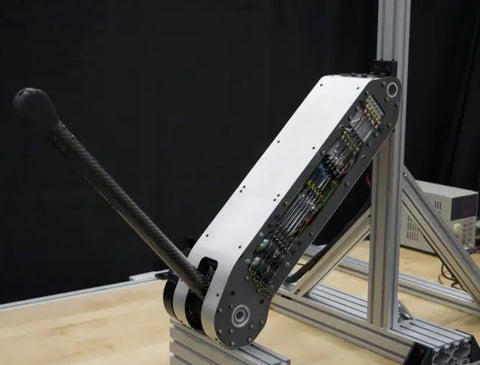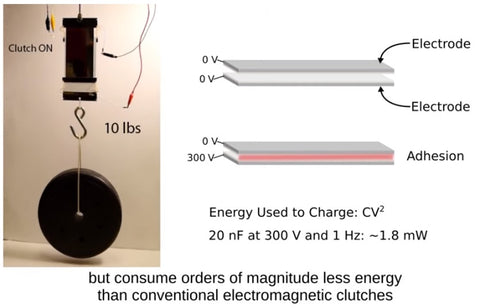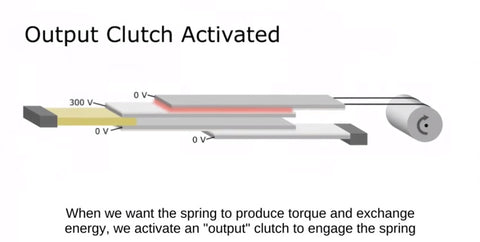A Stanford University project in Spring assisted Actuators

Scientists at Stanford University have developed an innovative approach to enhance electric motors, significantly improving their ability to execute dynamic actions. By introducing a novel actuator, which is a mechanism that converts energy into movement, they have achieved this enhancement. Described in Science Robotics, their actuator incorporates springs and clutches, enabling it to perform a wide range of functions while consuming considerably less energy than standard electric motors.
The burgeoning field of robotics paints a picture of the future that's equal parts awe and utility. At the heart of this futuristic vision is the concept of actuators - the very muscles behind a machine's movements. They are the bridge between electronic and mechanical worlds, turning electrical energy into the kinetic force that fuels a robot’s most intricate tasks.
Enter Stanford University, who have revolutionized the actuator scene by introducing a spring-assisted marvel that's poised to redefine the efficiency and agility of next-gen robots. The breakthrough has far-reaching implications for nearly every industry that has started to integrate robotics technology, promising enhanced precision, energy savings, and a leap forward in robotic versatility.
Understanding the Spring-Assisted Actuator

At its core, the newly designed actuator operates on a fundamental principle - storing energy to be released when needed, much like a compressed spring recoils to its original form. This approach marks a paradigm shift from the traditional-use electric motors, often criticized for their energy-inefficiency and inability to handle dynamic and sudden movements with ease.

The research, published in Science Robotics, outlines a design that ingeniously melds springs and clutches to create a versatile actuator. This hybrid approach allows the actuator to perform the kind of sophisticated movements that we currently associate with electric motors, all the while using a fraction of the energy. This is a game-changer for not only the energy efficiency of robots but also their design and mechanics.

Applications and Implications

The applications of this spring-assisted actuator are as diverse as they are vast. Consider an assembly line process where robots need to repeatedly lift and place objects with uncanny precision, or in the agile maneuvers required for rescue missions in hazardous environments. In each scenario, the actuator’s ability to handle dynamic loads with precision and speed comes as a boon, making robots more reliable and the operations they support, more sophisticated.
The impact on industry could be monumental. By reducing the energy demands of robotic systems, there’s a tantalizing promise of lowered operational costs, which could, in turn, foster a more widespread adoption of robotic technology. Additionally, in fields where robots are crucial but the weight and power limitations are non-negotiable, such as space exploration, this actuator presents an opportunity to craft machines far more resilient and resourceful.
Design Insights and Future Prospects
The design principles that underscore the spring-assisted actuator offer a window into the future of robotics. The focus on energy efficiency is not a mere engineering feat; it is an anticipation of an era where sustainable technology stands at the forefront. The intricate interplay of springs and clutches represents a more ‘organic’ robotic motion, mimicking the muscle and tendon architecture found in nature’s most finely tuned creations.
In terms of the actuator's future evolution, the research team at Stanford and the wider engineering community are likely to explore ways to integrate this technology into various robotic formats. We can expect to witness a wave of prototypes and case studies that highlight the actuator’s adaptability across different machines and use cases. Furthermore, with ongoing refinements in the materials and technology used, we could soon see smaller, yet more powerful actuators that will push the envelope of robotic potential even further.
Preparing for a Robotic Renaissance
The emergence of the spring-assisted actuator signals a new chapter in the field of robotics, one grounded in practicality and innovation. Businesses, engineers, and anyone with an interest in technology are wise to keep a watchful eye on these developments. It is not a stretch to say that we are on the brink of witnessing a renaissance in how we perceive and utilize robotic technology.
Standing at this juncture, it’s imperative to start conversations around the societal and economic changes that this technology might usher in. As robots become more prevalent and sophisticated, new job profiles and skill sets will emerge, and existing roles will evolve. There will be a surge of opportunities across the spectrum, from designing and building these robots to maintaining and programming them.
The Road Ahead
The road ahead for the spring-assisted actuator — and robotics, in general — is one brimming with potential. The marriage between ingenuity and practicality that this new technology embodies is a harbinger of the remarkable advancements we can expect. With every deliberate step, we inch closer to a world where robots are seamlessly integrated into our daily lives, carrying out tasks that were once the stuff of science fiction.
In the grander scheme, this intersection of robotics and efficient actuation might just be the catalyst for the innovation that paves the way for a variety of breakthroughs, from smart manufacturing to healthcare and beyond. The researchers at Stanford have not just built a better actuator; they have set in motion a chain of events that could lead to robots becoming the unquestioned assistants of human potential. It’s an exciting prospect, and one that we are uniquely poised to witness and participate in.
The integration of the spring-assisted actuator is not a matter of 'if' but 'when.' And when it does, it will spark a domino effect of progress, transcending the confines of individual industries and transforming the very fabric of our technological ecosystem. With this piece of remarkable engineering, we are not merely enhancing robots; we are crafting a future where robots, empowered by ingenuity, work harmoniously with humanity to create a world that is efficient, innovative, and inspirational. The robotic renaissance is nigh, and the spring-assisted actuator is its herald.